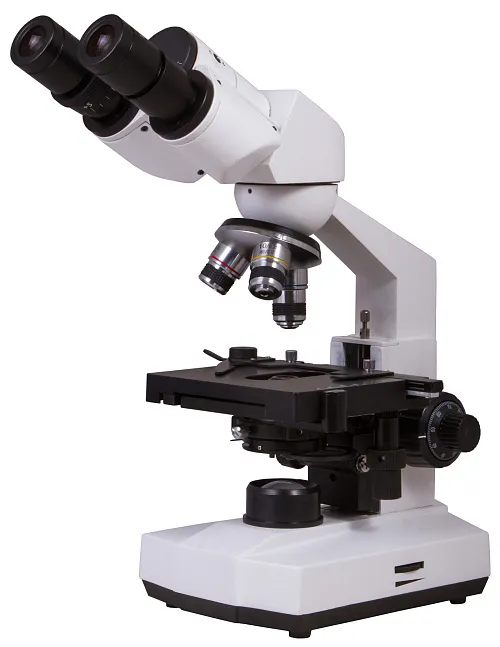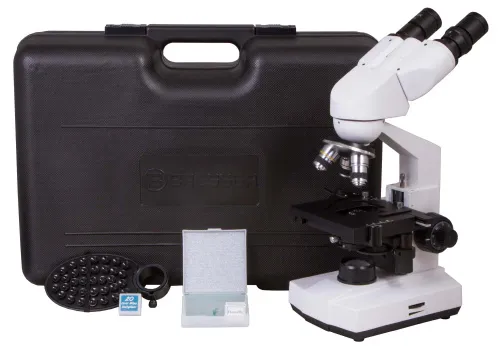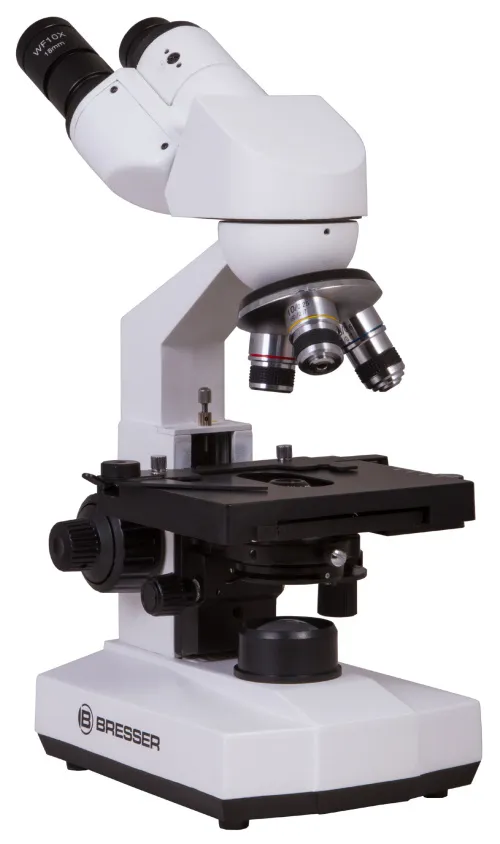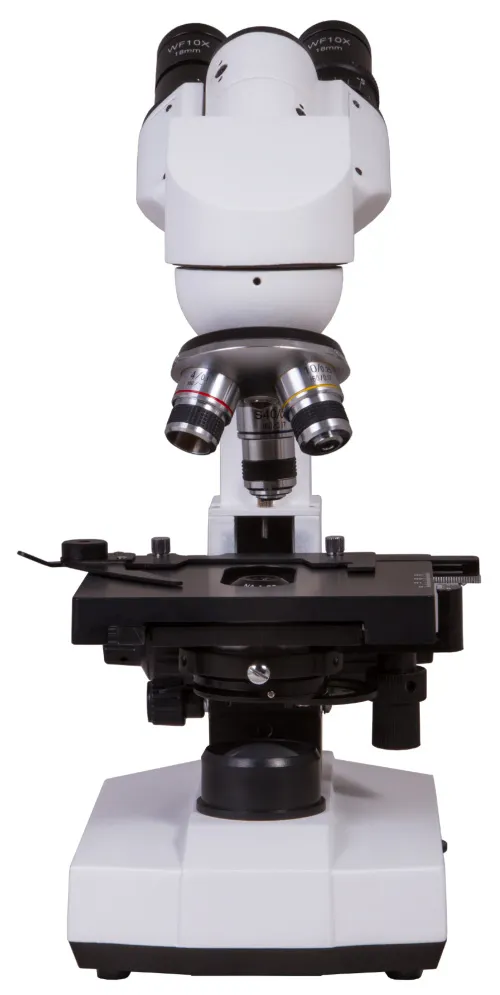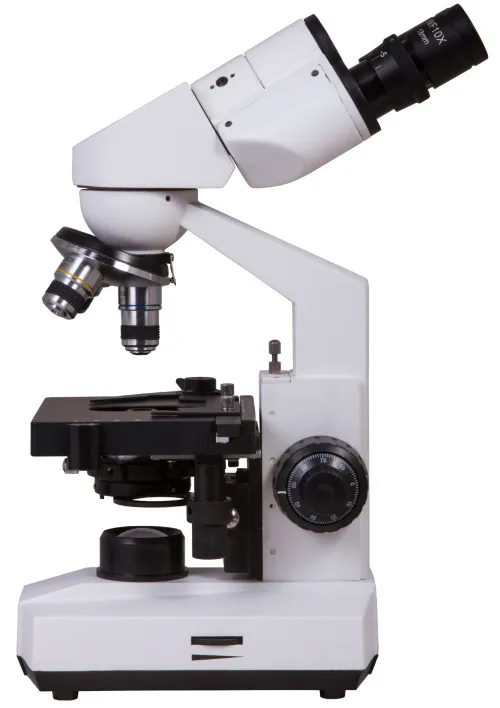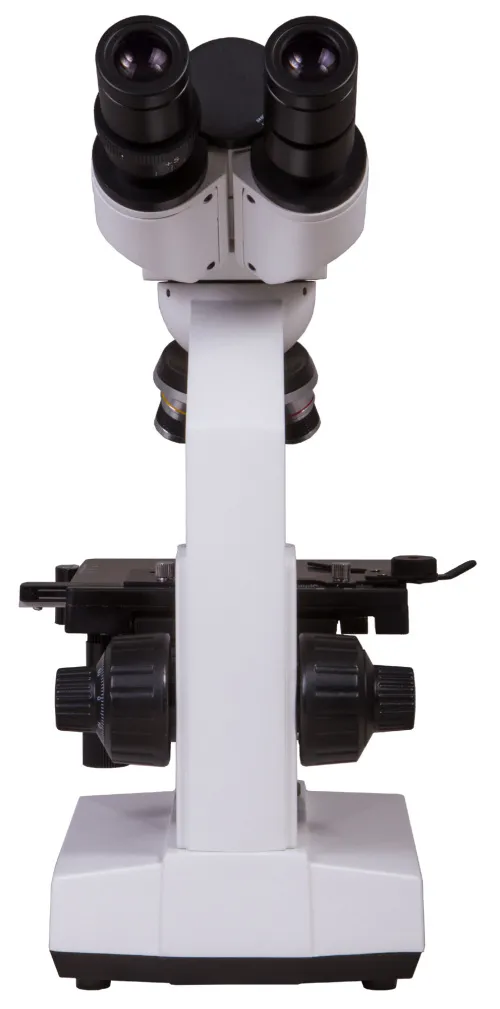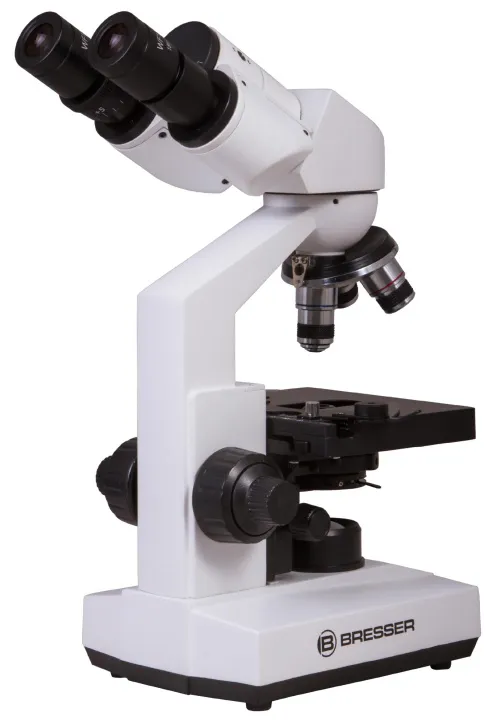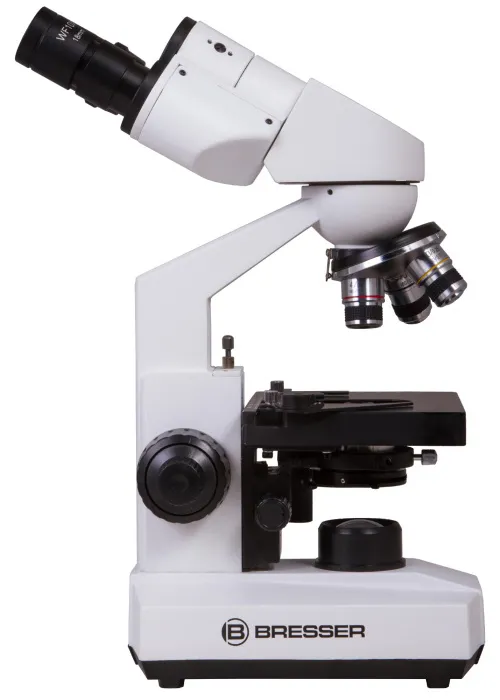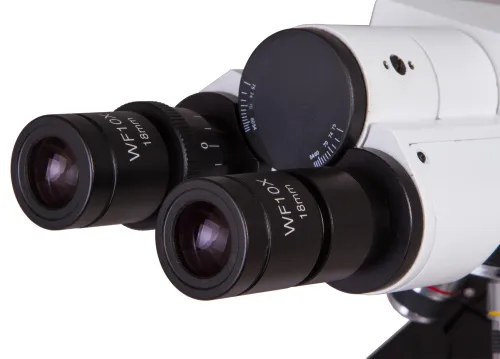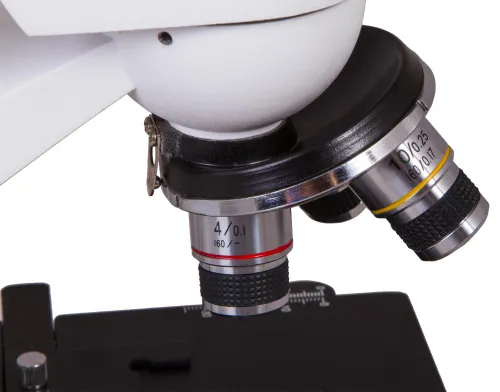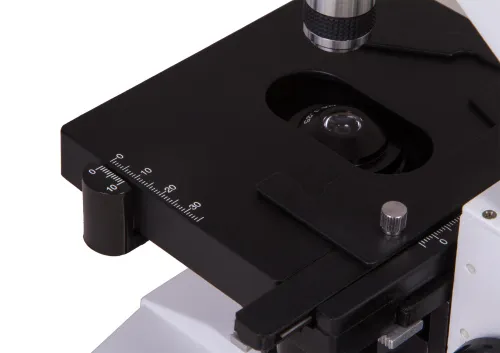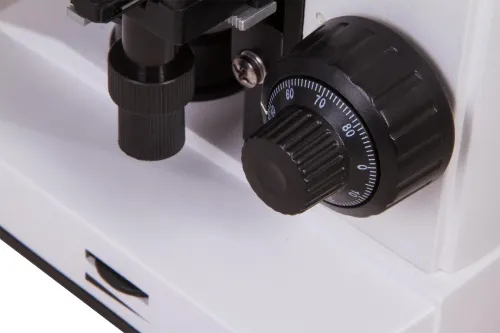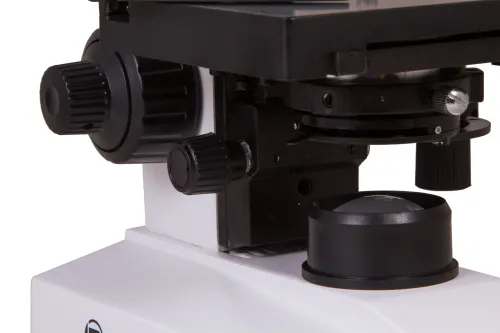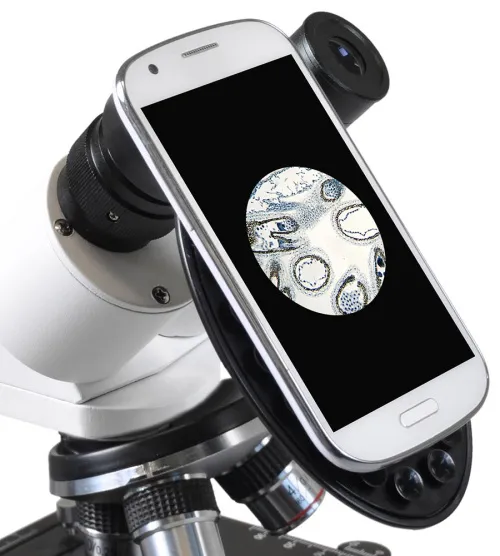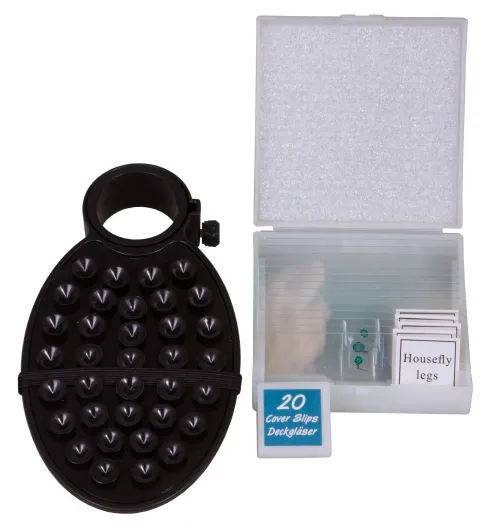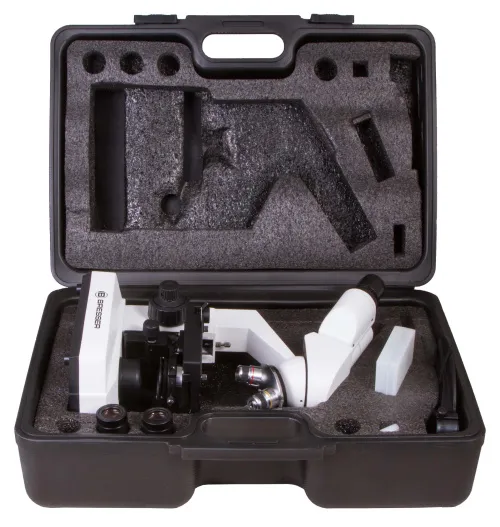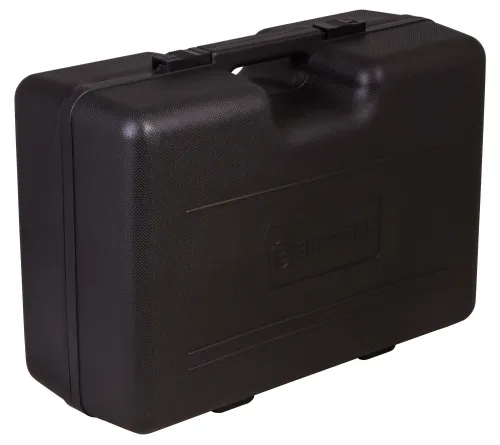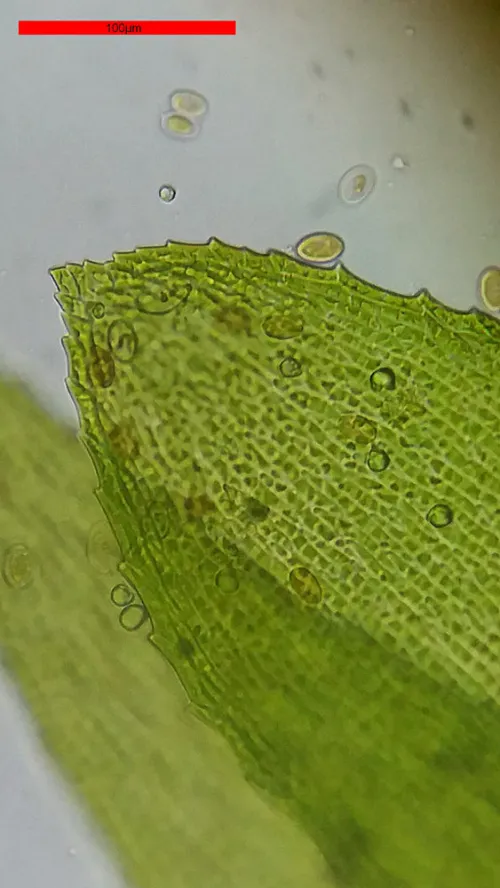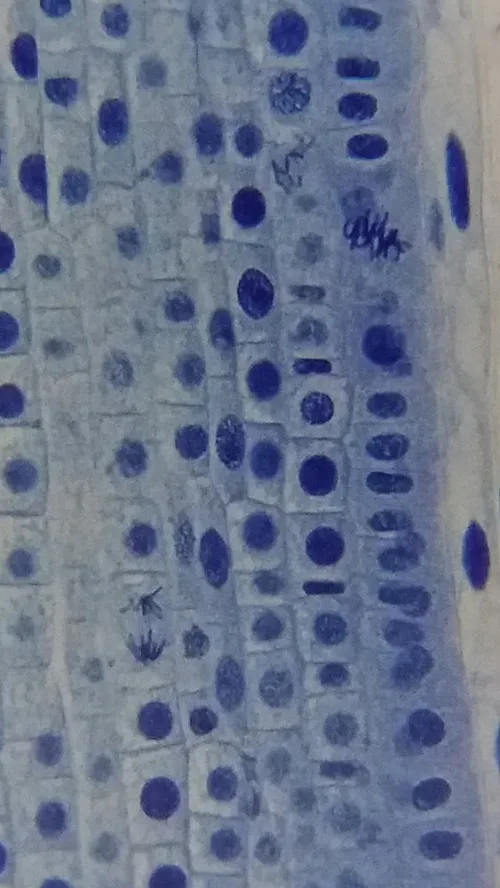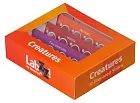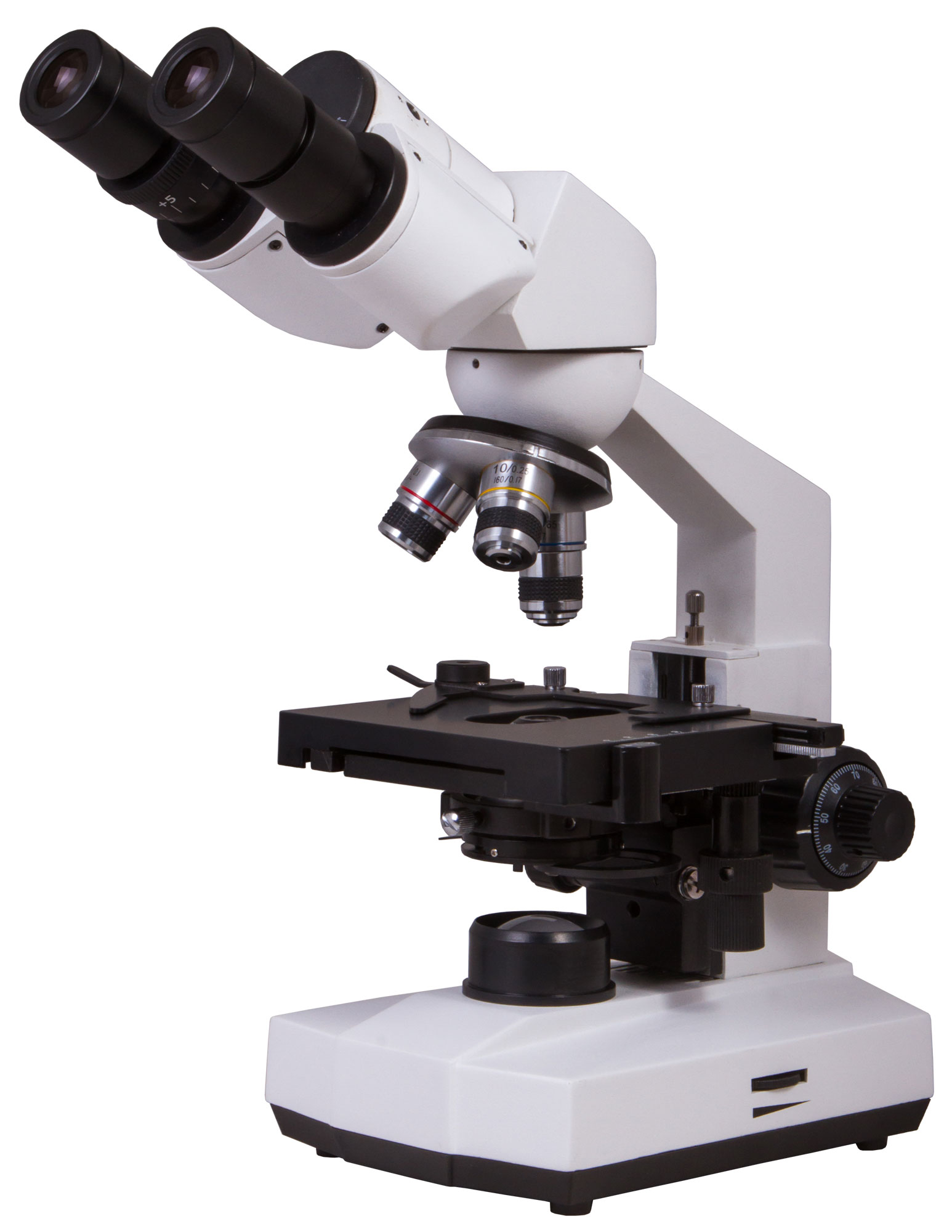Bresser Erudit Basic 40–400x Microscope
For brightfield observations. Magnification: 40–400x. Binocular
| Product ID | 73761 |
| Brand | Bresser GmbH, Germany |
| Warranty | 2 years |
| EAN | 4007922030777 |
| Package size (LxWxH) | 49x36x22 cm |
| Shipping Weight | 6.53 kg |
The Bresser Erudit Basic 40–400x is a versatile biological microscope with binocular head. Observing with both eyes makes viewing more comfortable and ergonomic and improves detail recognition. With its high quality optics it is the perfect choice for use in school or hobby. With battery powered LED lighting it can be used anywhere, e.g. for fieldwork or excursions.
The microscope can be used on a great variety of subjects, for example thin sections, pond life, or blood smears. It is also a useful tool to look at parasites of pets and livestock (e.g. coccidia, helminths, skin and fur parasites).
Three magnifications (40x, 100x, 400x) deliver good resolution to see small details. There is no need to work with immersion oil. The achromatic DIN objectives deliver sharp images with nice detail. The 40x objective is spring loaded to minimize the risk of damage to specimen or objective.
The Bresser Erudit Basic 40–400x comes with a sturdy case for transport and storage, as well as with a smartphone holder for easy and convenient documentation of microscopic images and video.
Features:
- Type: biological microscope, transmitted light, binocular head
- Application: biology
- Battery powered long life LED light for mobile use
- Coarse and fine focus, coaxial
- Coaxial mechanical desk
- Adjustable Abbe condenser with diaphragm and filter holder
- Comfortable eyepiece tube, 360° rotatable
- Sturdy carry case
The kit includes:
- Microscope body with LED light
- 2 WF10x eyepieces
- Achromatic DIN objectives (4x, 10x, 40x)
- Abbe condenser N.A. 1.25, adjustable, with diaphragm and filter holder
- Smartphone holder
- Carry case
- Box with preparations, empty slides and cover glasses
- User manual
| Product ID | 73761 |
| Brand | Bresser GmbH, Germany |
| Warranty | 2 years |
| EAN | 4007922030777 |
| Package size (LxWxH) | 49x36x22 cm |
| Shipping Weight | 6.53 kg |
| Type | biological, light/optical |
| Microscope head type | binocular |
| Head | 360 ° rotatable |
| Magnification, x | 40 — 400 |
| Eyepiece tube diameter, mm | 23.2 |
| Eyepieces | WF10x/18mm (2 pcs.) |
| Objectives | 4x, 10x, 40x (achromat DIN standard) |
| Revolving nosepiece | for 3 objectives |
| Stage features | mechanical, two-axis, with a measuring scale, with a mechanical stage |
| Condenser | Abbe condenser N.A. 1.25 with a diaphragm and filter holder |
| Focus | coaxial; coarse and fine |
| Body | aluminum, plastic |
| Illumination | LED |
| Brightness adjustment | ✓ |
| Power supply | 3 batteries type AA/LR6 (not included) |
| User level | beginners |
| Application | school/educational |
| Illumination location | lower |
| Research method | bright field |
| Experiment kit included | ✓ |
| Pouch/case/bag in set | case |
We have gathered answers to the most frequently asked questions to help you sort things out
Find out why studying eyes under a microscope is entertaining; how insects’ and arachnids’ eyes differ and what the best way is to observe such an interesting specimen
Read this review to learn how to observe human hair, what different hair looks like under a microscope and what magnification is required for observations
Learn what a numerical aperture is and how to choose a suitable objective lens for your microscope here
Learn what a spider looks like under microscope, when the best time is to take photos of it, how to study it properly at magnification and more interesting facts about observing insects and arachnids
This review for beginner explorers of the micro world introduces you to the optical, illuminating and mechanical parts of a microscope and their functions
Short article about Paramecium caudatum - a microorganism that is interesting to observe through any microscope

